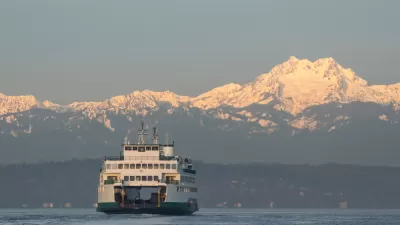Seattle appears to be following the Vancouver, B.C. model by increasing population and residential density while investing in transit. If it works, traffic congestion will not deteriorate, and vehicle trips should drop.

America's growing cities face an immense challenge: can they add population without greatly exacerbating traffic congestion? By one measure, Vancouver, British Columbia set the standard by "reduc(ing) traffic by 20 to 30 percent since 2006 while growing its population by 4.5 percent," according to this August 2013 post.
Outside of the six transit legacy cities in the U.S: "Boston, Chicago, New York, Philadelphia, San Francisco and Washington, D.C. -- that developed dense downtowns long before the automobile and have always maintained significant transit ridership," it is difficult to increase transit share as newer cities were largely designed around the automobile, observes Scott Beyer in Governing.
Seattle may come closest to emulating Vancouver model by "relaxing zoning laws to allow for denser development" and improving transit.
As America’s fastest-growing big city -- it added 21,000 people in 2015 -- it’s growing denser and more congested --[but] countywide bus ridership since 2002 has grown at a faster rate, more than double, compared to the population.
Residents invest in transit
Last November, the Puget Sound region passed a measure that will fund the the $53.8 billion Sound Transit 3 plan. More telling of the pro-urban outlook of city residents, though, was the passage of a transportation measure in 2015. "(T)he biggest winners appear to be Seattle’s urbanists — its advocates for more bicycling, transit and density," reported The Seattle Times.
And a year earlier, Seattle residents stepped up to fund buses after King County voters, the majority of which live outside Seattle, rejected increasing a car tab and a 0.1 percent sales tax.
"Time will tell whether these measures help Seattle maintain, or even improve, its mobility," concludes Beyer.
Already, average congestion and commute times there remain below that of legacy cities. The real test will be keeping it that way even as it continues to get denser and bigger.
FULL STORY: The Right Kind of Transit for 'In-Between' Cities

Alabama: Trump Terminates Settlements for Black Communities Harmed By Raw Sewage
Trump deemed the landmark civil rights agreement “illegal DEI and environmental justice policy.”

Planetizen Federal Action Tracker
A weekly monitor of how Trump’s orders and actions are impacting planners and planning in America.

The 120 Year Old Tiny Home Villages That Sheltered San Francisco’s Earthquake Refugees
More than a century ago, San Francisco mobilized to house thousands of residents displaced by the 1906 earthquake. Could their strategy offer a model for the present?

In Both Crashes and Crime, Public Transportation is Far Safer than Driving
Contrary to popular assumptions, public transportation has far lower crash and crime rates than automobile travel. For safer communities, improve and encourage transit travel.

Report: Zoning Reforms Should Complement Nashville’s Ambitious Transit Plan
Without reform, restrictive zoning codes will limit the impact of the city’s planned transit expansion and could exclude some of the residents who depend on transit the most.

Judge Orders Release of Frozen IRA, IIJA Funding
The decision is a victory for environmental groups who charged that freezing funds for critical infrastructure and disaster response programs caused “real and irreparable harm” to communities.
Urban Design for Planners 1: Software Tools
This six-course series explores essential urban design concepts using open source software and equips planners with the tools they need to participate fully in the urban design process.
Planning for Universal Design
Learn the tools for implementing Universal Design in planning regulations.
Clanton & Associates, Inc.
Jessamine County Fiscal Court
Institute for Housing and Urban Development Studies (IHS)
City of Grandview
Harvard GSD Executive Education
Toledo-Lucas County Plan Commissions
Salt Lake City
NYU Wagner Graduate School of Public Service





























